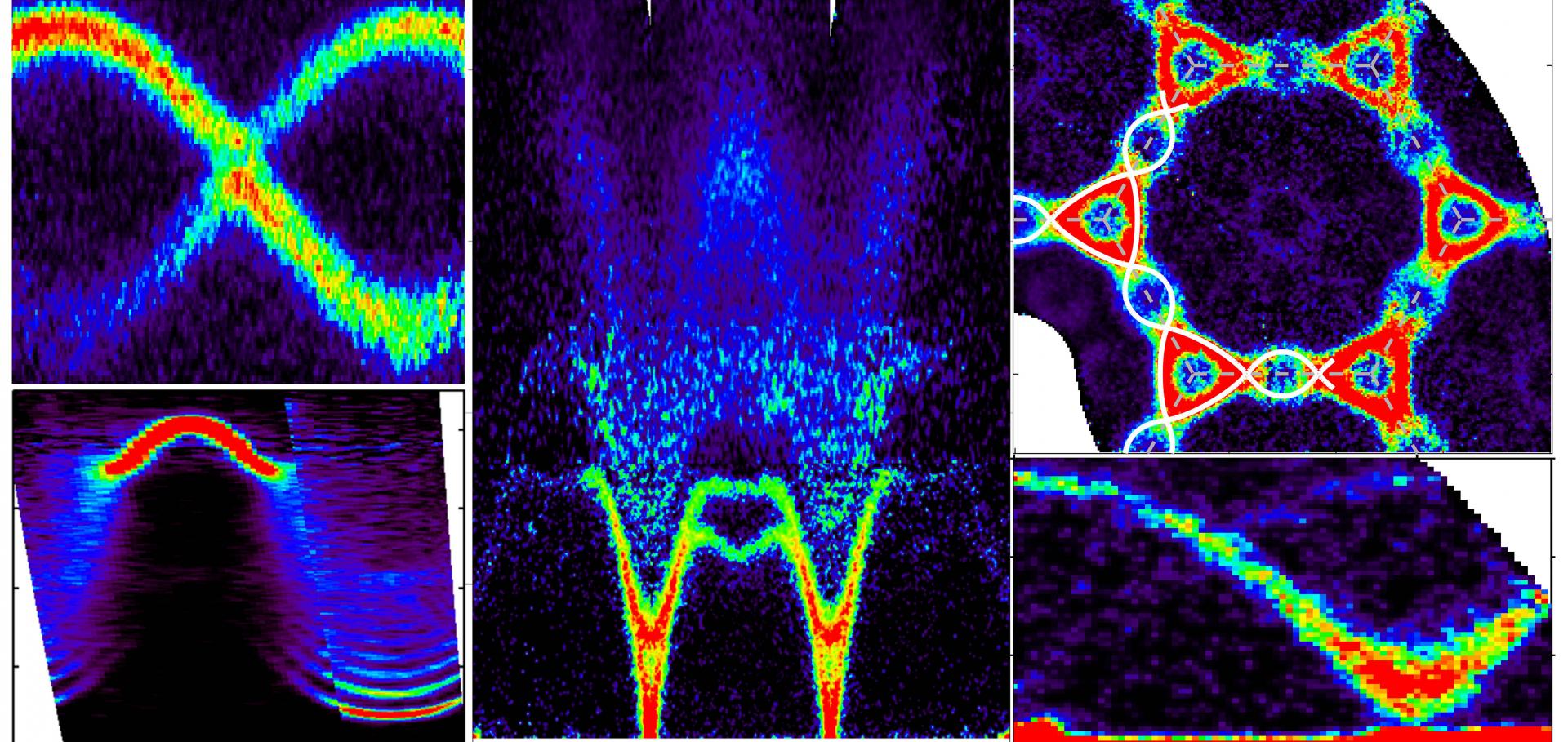Evolution of spin excitations in a gapped antiferromagnet from the quantum to the high-temperature limit
ArXiv cond-mat/0112188 (2001)
Abstract:
We have mapped from the quantum to the classical limit the spin excitation spectrum of the antiferromagnetic spin-1 Heisenberg chain system CsNiCl3 in its paramagnetic phase from T=5 to 200K. Neutron scattering shows that the excitations are resonant and dispersive up to at least T=70K, but broaden considerably with increasing temperature. The dispersion flattens out with increasing temperature as the resonance energy Delta at the antiferromagnetic wave-vector increases and the maximum in the dispersion decreases. The correlation length xi between T=12 and 50K is in agreement with quantum Monte Carlo calculations. xi is also consistent with the single mode approximation, suggesting that the excitations are short-lived single particle excitations. Below T=12K where three-dimensional spin correlations are important, xi is shorter than predicted and the experiment is not consistent with the random phase approximation for coupled quantum chains. At T=200K, the structure factor and second energy moment of the excitation spectrum are in excellent agreement with the high-temperature series expansion.The properties of Haldane excitations and multi-particle states in the antiferromagnetic spin-1 chain compound CsNiCl
ArXiv cond-mat/0112152 (2001)
Abstract:
We report inelastic time-of-flight and triple-axis neutron scattering measurements of the excitation spectrum of the coupled antiferromagnetic spin-1 Heisenberg chain system CsNiCl3. Measurements over a wide range of wave-vector transfers along the chain confirm that above T_N CsNiCl3 is in a quantum-disordered phase with an energy gap in the excitation spectrum. The spin correlations fall off exponentially with increasing distance with a correlation length xi=4.0(2) sites at T=6.2K. This is shorter than the correlation length for an antiferromagnetic spin-1 Heisenberg chain at this temperature, suggesting that the correlations perpendicular to the chain direction and associated with the interchain coupling lower the single-chain correlation length. A multi-particle continuum is observed in the quantum-disordered phase in the region in reciprocal space where antiferromagnetic fluctuations are strongest, extending in energy up to twice the maximum of the dispersion of the well-defined triplet excitations. We show that the continuum satisfies the Hohenberg-Brinkman sum rule. The dependence of the multi-particle continuum on the chain wave-vector resembles that of the two-spinon continuum in antiferromagnetic spin-1/2 Heisenberg chains. This suggests the presence of spin-1/2 degrees of freedom in CsNiCl3 for T < 12K, possibly caused by multiply-frustrated interchain interactions.The properties of Haldane excitations and multi-particle states in the antiferromagnetic spin-1 chain compound CsNiCl
(2001)
Direct Measurement of the Spin Hamiltonian and Observation of Condensation of Magnons in the 2D Frustrated Quantum Magnet Cs2CuCl4
(2001)
Correlations and fluctuations in the 2D Heisenberg antiferromagnet
Journal of Magnetism and Magnetic Materials 236:1-2 (2001) 4-5


